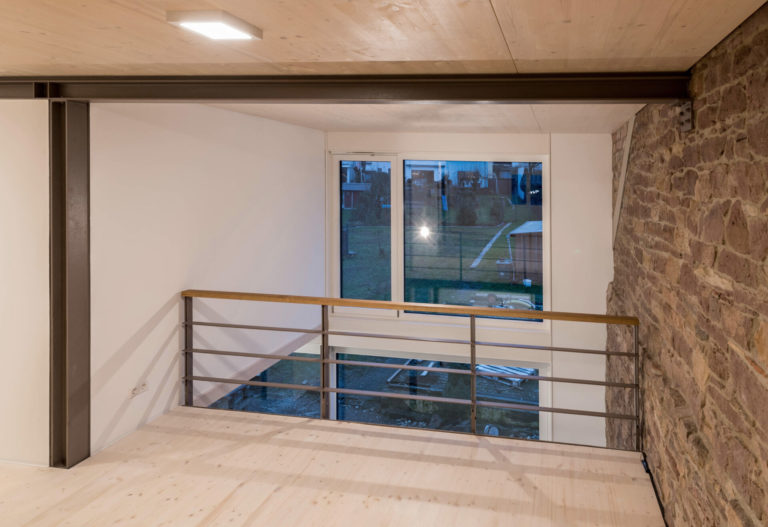The barn from 1870 was damaged several times during the war; most of the wood inside was rotten. However, the thick natural stone walls of the gables were still usable. This gave rise to the idea of erecting a new building between these two gable walls. In the style of the former barn, timber construction was to be the dominant construction for the ceilings, roof and walls, but not as a half-timbered structure but in a modern design in cross-laminated plywood. The columns and beams in rolled steel, a self-supporting steel staircase made of folded sheet metal, the polished cement screed on the ground floor and the natural stone contrast with the visible wood. The exterior façade is made of carbonised larch boards, while the roof overhang and passageway are made of untreated larch wood. The building is heated by a heat pump that draws its energy from a geothermal probe. Through the integration of the old building fabric, the choice of materials, the construction method and the use of renewable energies, this house stands for sustainability, healthy living, functionality and aesthetics.






